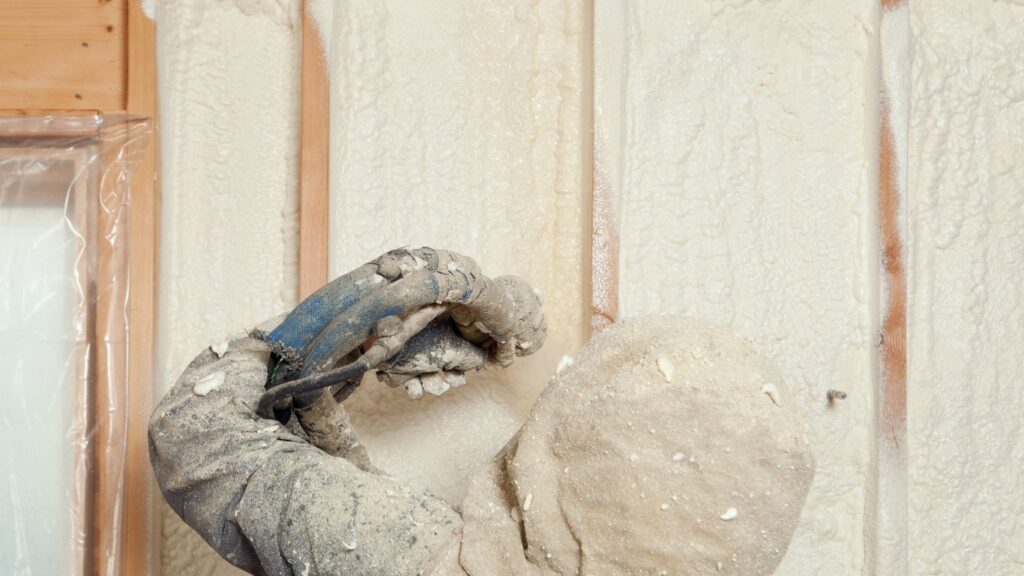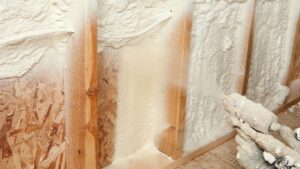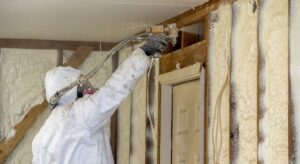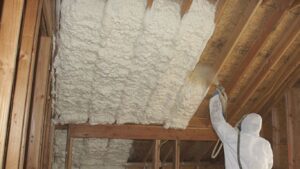If you’re looking for a cost-effective way to insulate your home, then open cell spray foam insulation might be the solution you need. This type of insulation offers numerous advantages over other types of insulation, such as moisture control and mold prevention, filling up cavities, and providing rigidity. However, there are also some drawbacks to using open cell spray foam insulation that you need to consider before making a decision. In this blog post, we will cover both the advantages and disadvantages of open cell spray foam insulation, along with the costs associated with it. We will also delve into estimating the thickness requirement for open cell spray foam insulation and how your HVAC systems can benefit from it. Lastly, we will provide an overview of attic insulation using open cell spray foam so that you can make an informed decision about your home’s insulation needs.
The Advantages of Open Cell Spray Foam Insulation
Open cell spray foam insulation offers various advantages that make it an excellent choice for homeowners and commercial buildings. This type of insulation provides excellent moisture control and prevents mold, ensuring a healthier indoor environment. Additionally, it efficiently fills up cavities and provides structural rigidity, making it suitable for all types of construction projects. With superior thermal insulation and energy efficiency, open cell spray foam insulation reduces air movement and minimizes heat loss, resulting in lower energy bills. Furthermore, it is a cost-effective solution compared to other types of insulation, making it a popular choice for new construction projects.
Moisture Control and Mold Prevention
Open cell spray foam insulation effectively controls condensation and humidity levels in the insulated space. Its airtight seal prevents moisture and mold growth, while the open cell structure allows moisture to escape, avoiding trapped moisture and mold issues. Furthermore, it acts as a barrier against water intrusion, safeguarding the building from leaks and water damage. This makes open cell spray foam insulation an excellent choice for moisture-prone areas like crawl spaces.
Filling Up Cavities and Providing Rigidity
Open cell spray foam insulation expands and fills up cavities, ensuring complete coverage. It molds and adheres to surfaces, providing structural rigidity and support. The foam expands into hard-to-reach areas, sealing off gaps and crevices effectively. This improves the overall structural integrity of the building while minimizing air leakage and drafts around electrical wiring and outlets. Open cell spray foam insulation is a cost-effective solution that efficiently fills cavities and provides rigidity, making it an excellent choice for both homeowners and commercial buildings.
The Disadvantages of Open Cell Spray Foam Insulation
While open cell spray foam insulation has its advantages, there are also some drawbacks to consider. One disadvantage is that it has a lower R-value compared to closed cell foam, meaning it may not provide sufficient insulation for extreme climates or high energy demand. Additionally, open cell spray foam insulation is more prone to water absorption and moisture issues, requiring a thicker application to achieve the same insulation value as closed cell foam. Professional installation is recommended due to the complexity of the spraying process.

Breaking Down the Costs of Open Cell Spray Foam Insulation
When considering open cell spray foam insulation, it’s important to understand the various costs involved. On average, the cost ranges from $0.50 to $0.75 per square foot. This price can be influenced by factors such as project size, labor expenses, and location. While DIY installation kits are available, they may not provide the same precision and effectiveness as professional installation. However, the long-term energy savings from open cell spray foam insulation can offset the initial investment. It’s crucial to weigh the potential benefits and drawbacks before deciding on the insulation type.
Insulation Cost per Square Foot
The cost of open cell spray foam insulation typically ranges from $0.50 to $0.75 per square foot, covering material, labor, and equipment. While DIY kits may offer lower costs, quality and effectiveness can vary. Regional factors and market conditions can also influence the cost. To get accurate pricing, it’s advisable to seek quotes from reputable insulation contractors. Considering the long-term energy savings, open cell spray foam insulation can be an affordable choice for homeowners and commercial buildings.
Factors Affecting Insulation Cost
Factors that affect the cost of insulation are the project size and total square footage, installation complexity and accessibility, insulation thickness requirement and desired R-value, local market conditions, and availability of contractors. Additional factors like the need for existing insulation removal or special equipment can impact the cost. Consider these factors when estimating the cost of open cell spray foam insulation.
Estimating the Thickness Requirement for Open Cell Spray Foam Insulation
When it comes to open cell spray foam insulation, estimating the thickness requirement is crucial for optimal thermal performance and energy savings. Generally, a recommended thickness of 3 to 4 inches is advised. However, the specific thickness needed depends on factors such as the desired R-value and climate zone. Colder climates may require thicker insulation for better energy efficiency. To determine the ideal thickness, it’s essential to consult with a professional insulation contractor who can assess your specific needs. By ensuring the right thickness, you’ll experience the benefits of heat transfer prevention and reduced energy bills.
How Can HVAC Systems Benefit from Open Cell Spray Foam Insulation?
Open cell spray foam insulation offers numerous benefits for HVAC systems. By reducing air leakage, it improves system efficiency and minimizes ductwork losses. The airtight seal helps maintain consistent indoor temperatures, reduces strain on the HVAC system, and lowers energy consumption. Additionally, it improves indoor air quality by minimizing allergens and pollutants.
Attic Insulation Using Open Cell Spray Foam: An Overview
Attic insulation using open cell spray foam is a cost-effective and efficient solution. It seals and insulates the attic, preventing heat transfer and air leakage. The foam expands to fill gaps and conform to irregular surfaces like studs and electrical outlets, providing better insulation coverage. This type of insulation improves energy efficiency, reduces energy bills, and creates a comfortable living environment. Open cell spray foam insulation is suitable for both residential and commercial buildings. Its affordable cost and advantages over traditional insulation make it a popular choice among homeowners.
Conclusion
Open cell spray foam insulation is the cost-effective solution for your insulation needs. With its ability to provide superior air sealing and thermal performance, it can help you save on energy costs in the long run. Additionally, open cell spray foam insulation offers soundproofing benefits, making your space more comfortable and peaceful. If you’re looking for a reliable and experienced team to install open cell spray foam insulation, look no further than Odessa Spray Foam Solution Inc. Our experts are ready to assist you and ensure that your insulation project is done efficiently and effectively. Contact us today to learn more about how open cell spray foam insulation can benefit your home or business.





